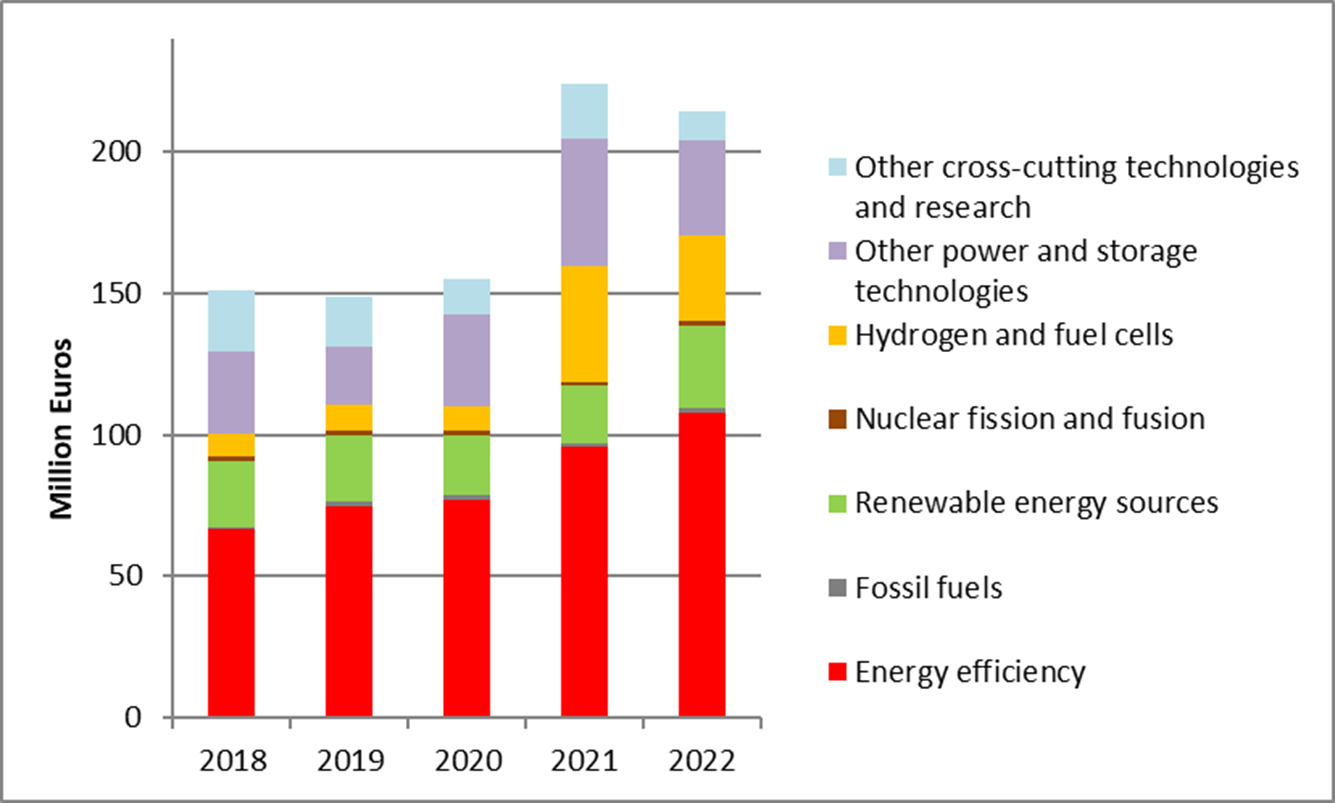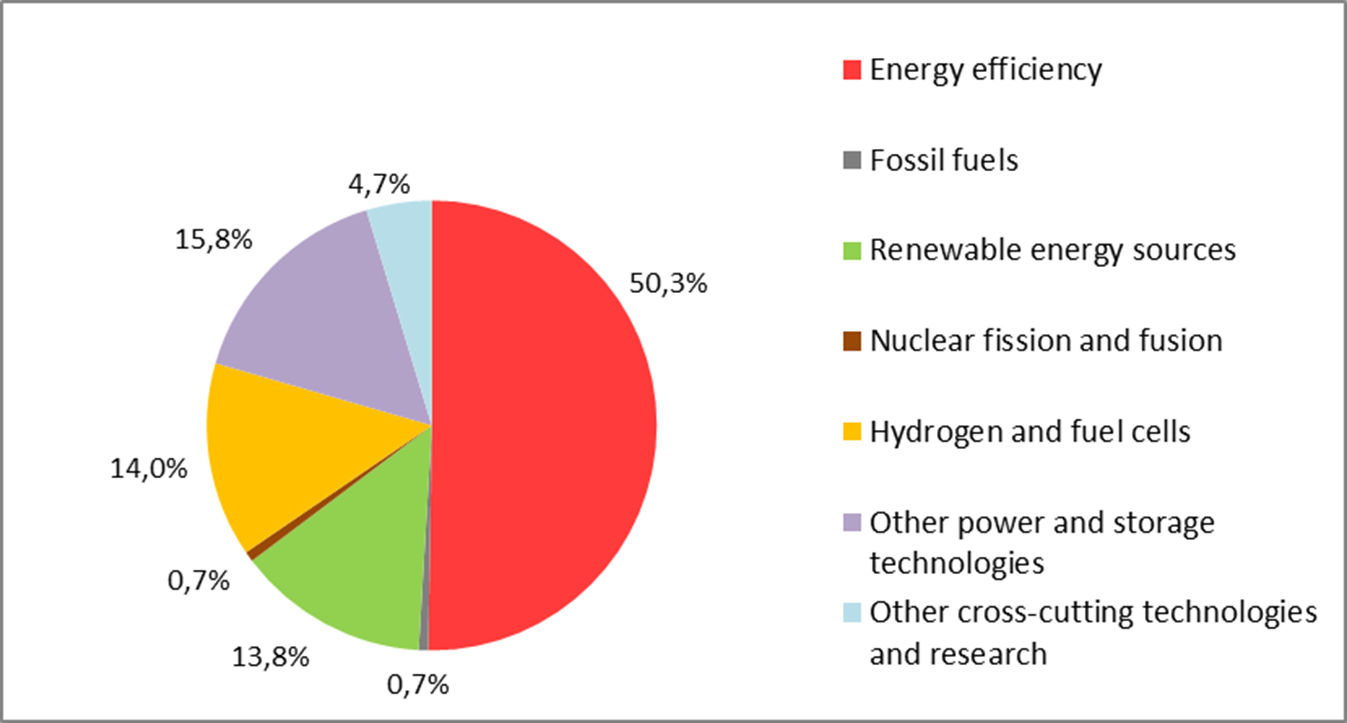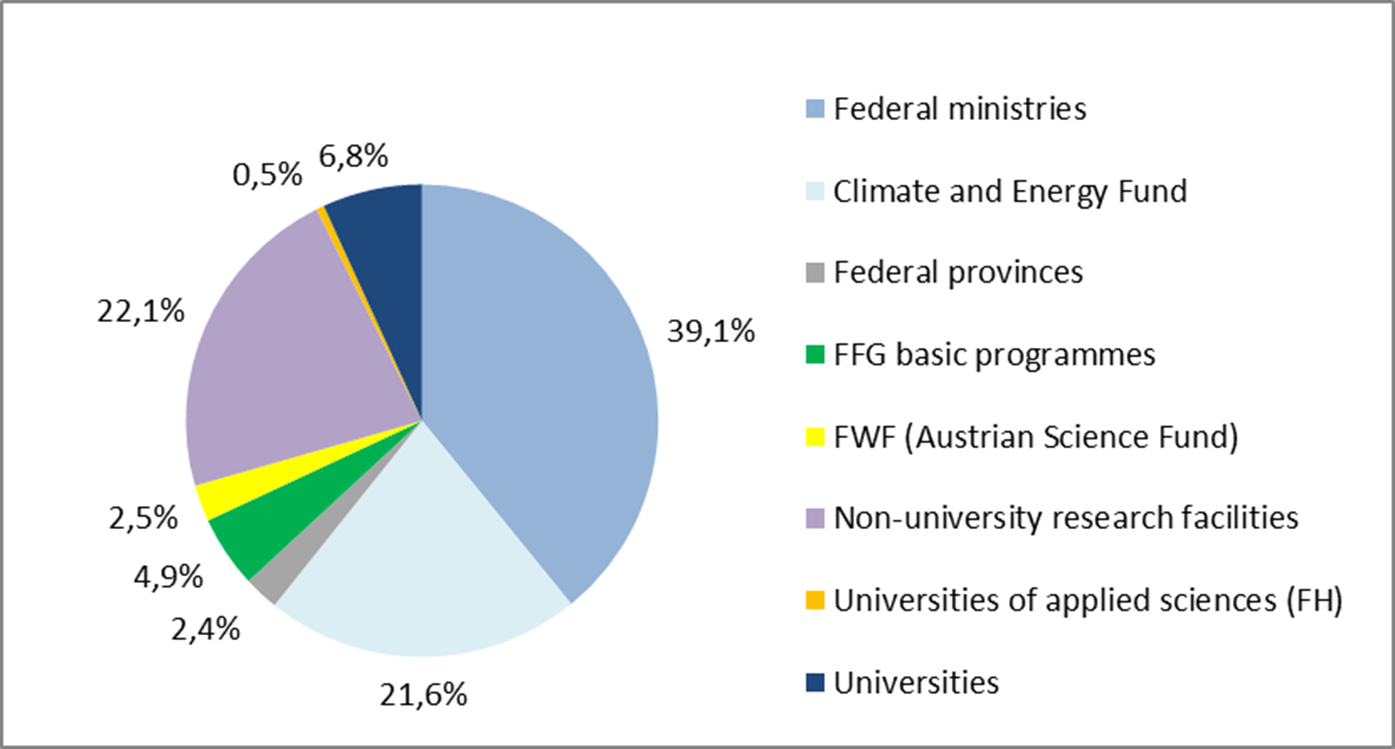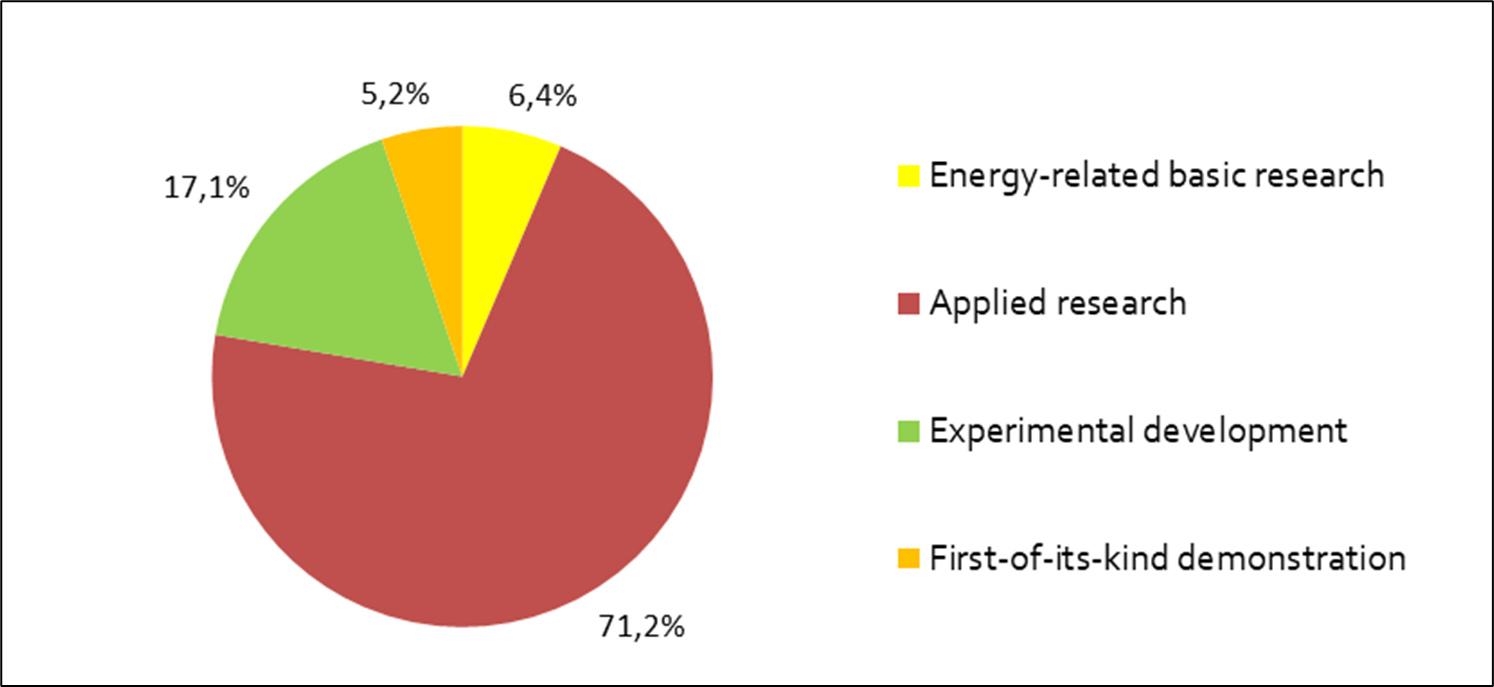Energy R&D 2022: Public Expenditures in Austria
Bibliographic Data
Energy Research Survey 40/2022A. Indinger, F. Bettin, M. Rollings
Publisher: BMK
English
Content Description
Public expenditure on research, development and demonstration projects in the energy sector amounted to 214.4 million euros in 2022. The highest value ever recorded in Austria in 2021 was not reached by 9.6 million euros (reduction of 4.3%).
In first place – as in previous years – is the area of "Energy efficiency" with expenditures of 107.8 million euros. This value represents a significant increase of 12.3% compared to 2021. This is followed at a great distance by the area of "Other power and storage technologies" with 34.0 million euros (a decrease of 11.1 million euros compared to 2021) and the area of "Hydrogen and fuel cells", where investments of 30.0 million euros remained significantly behind the record year 2021 (also a minus of 11.1 million euros).
The area of "Renewable energy sources" contributed 29.6 million euros, an increase of 9.1 million euros. In "Other cross-cutting technologies and research", investments halved, with this sector contributing only 10.1 million euros in 2022.
The thematic areas of "Nuclear fission and fusion" (1.6 million euros, primarily fusion research in the European framework) and "Fossil fuels: oil, gas and coal" (1.5 million euros) are still comparatively far behind in terms of funding in 2022 and are also not a priority in publicly funded energy research in Austria.
70.6 % of the expenditures in 2022 presented in this report are direct financing by funding agencies (federal government, provinces and funds). The federal ministries provided 83.9 million euros for programmes in 2022, of which 69.0 million euros can be allocated to the BMK. The Climate and Energy Fund (KLIEN), previously the institution with the highest public funding for energy-related R&D, fell significantly behind with 46.4 million euros in 2022. The expenditure cited by the federal states was 5.1 million euros, led by Styria with 2.4 million euros, followed by Vienna with 1.9 million euros. The category "FFG basic programmes" contributed 10.6 million euros. The Austrian Science Fund FWF had a significant increase with 5.3 million euros.
The remaining share of 29.4 % is accounted for by own research at research institutions, which is mainly financed with federal or state funds. With 32.9 million euros, the AIT dominated the ranking in the use of own funds in energy research at non-university research institutions. Silicon Austria Labs reported own funds of 13.1 million euros in the energy sector in 2022. The reported own funds expenditures of the universities (including ISTA) rose to 14.7 million euros. By far the highest expenditures came from the TU Vienna (9.6 million euros). Expenditure from own funds at the universities of applied sciences declined and accounted for 1.1 million euros in 2022.
Almost 1,300 projects and activities were recorded in 2022, with 71.2% of the funds used for applied research. Expenditures for experimental development accounted for 17.1%, those for energy-related basic research for 6.4%. At 5.2%, investments in initial demonstration represent the category with the smallest share in this analysis.
In 119 of the 336 projects commissioned by or through the FFG in 2022, at least one woman held a leading position in the consortium, which was the result of an additional evaluation. In 2022, women led more projects than in previous years: 67 projects, or every fifth project. On average, these female project leaders were responsible for smaller projects than their male colleagues, but the large gap of recent years has narrowed significantly. The share of female technicians in the projects is 15.6%. The respective shares vary greatly between the topics worked on or the financing programme lines.
The importance of energy research can also be measured by the share of an economy's economic output expressed by gross domestic product (GDP). In 2021, the increases in the energy sector led to a substantial surge to 0.056%, which then dropped to 0.048% in 2022.
The complete study is only available in German:
Energieforschungserhebung 2022 - Ausgaben der öffentlichen Hand in Österreich. Erhebung für die IEA
Downloads




